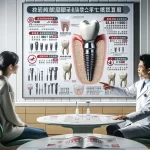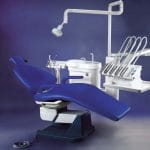The dental operatory is more than just a workspace; it’s the heartbeat of any dental practice. This is where dental professionals spend the majority of their clinical hours, making it crucial for both productivity and the well-being of the entire dental team. A thoughtfully designed operatory that prioritizes ergonomics and efficiency is not just beneficial—it’s essential for a thriving practice. By implementing key design principles, selecting the right equipment, and optimizing workflows, dental practices can create environments that enhance clinical outcomes, promote team health, and ultimately improve their bottom line.
Key Principles of Ergonomic Operatory Design
Ergonomics—the science of fitting the work environment to the worker—is vital in dentistry. Dental professionals are particularly vulnerable to work-related musculoskeletal disorders due to awkward postures, repetitive motions, and prolonged static positions. Here’s how proper operatory design can mitigate these risks:
- Maintain Neutral Postures: Ensure that dental professionals can maintain a neutral spine alignment with relaxed shoulders and flat feet. This requires properly adjusted patient chairs, provider stools, and delivery systems.
- Minimize Repetitive Motions: The layout of instruments should facilitate smooth, efficient movements without excessive reaching or twisting. Frequently used items should be within easy reach.
- Provide Adjustable Equipment: Dental chairs, stools, and delivery systems must be easily adjustable to accommodate various providers and procedures. Proper positioning is key to avoiding strain.
- Optimize Layout for Efficiency: The operatory layout should support a logical workflow that minimizes unnecessary steps. Thoughtful placement of equipment, supplies, and technology is essential.
Ideal Operatory Dimensions and Layout
While there’s no one-size-fits-all solution for operatory design, certain dimensions and layouts can significantly enhance efficiency and ergonomics. Industry experts recommend an operatory size of approximately 10 feet by 12 feet, with 9-foot ceilings to allow ample space for movement without feeling cramped.
Efficient Operatory Layouts Often Feature:
- A central patient chair with clearance on both sides for provider and assistant access.
- Rear delivery systems that keep tubing and cords away from the patient.
- Side or 12 o’clock cabinet positioning for easy access without excessive twisting.
- A dedicated computer workstation for charting and imaging, ideally recessed to avoid glare.
- Streamlined pathways in and out of the operatory to minimize cross-traffic.
Designing for Patient Comfort and Experience
The design of the operatory also plays a crucial role in enhancing the patient experience. With up to 36% of the population experiencing dental anxiety, thoughtful design can alleviate fears associated with the dental environment.
Considerations for Patient-Centered Design Include:
- Soothing color palettes inspired by nature to promote relaxation.
- Dimmable lighting to reduce glare and eyestrain.
- Sound-absorbing materials to minimize noise.
- Comfortable patient chairs with neck and lumbar support.
- Amenities such as warm blankets, calming music, and television to provide positive distractions.
- Accessible storage for patient belongings.
Integrating Technology for Efficiency
Modern dental operatories are increasingly tech-enabled. Digital charting, imaging, and CAD/CAM systems are becoming standard practice. Seamlessly integrating these technologies into operatory design is crucial for maximizing their efficiency benefits.
Strategies for Tech-Optimized Operatories:
- Plan for ample electrical and data outlets to support current and future technology needs.
- Design dedicated ergonomic workstations for computers and imaging equipment.
- Select user-friendly dental software with robust integration capabilities.
- Incorporate secure storage solutions for servers and network equipment.
- Futureproof layouts to accommodate tech upgrades as they arise.
Optimizing Workflows and Processes
Even the best-designed operatory will fall short if workflows are not optimized. Efficient operatories rely on streamlined systems that eliminate wasted time and motion.
Best Practices for Operatory Efficiency Include:
- Standardizing instrument setups and procedure protocols to reduce variability.
- Implementing four-handed dentistry techniques to minimize provider movement.
- Utilizing dental assistants effectively to enhance provider productivity.
- Streamlining restocking processes to minimize downtime between patients.
- Leveraging technology for seamless charting, billing, and patient communication.
Prioritizing Team Training and Ergonomics
The success of any operatory design hinges on how effectively the dental team utilizes it. Investing in training on ergonomic principles, equipment use, and optimized workflows is essential.
Strategies for Promoting Team Well-being Include:
- Providing ongoing ergonomics training to reinforce healthy habits.
- Conducting regular equipment inspections to ensure proper functioning.
- Encouraging micro-breaks and stretching exercises to reduce fatigue.
- Fostering a culture of open communication for continuous improvement.
- Monitoring team health metrics to identify areas needing support.
The Business Case for Ergonomic, Efficient Design
Investing in ergonomic operatory design is beneficial not only for team health but also for business performance. Improved ergonomics can lead to:
- Reduced work-related injuries and associated costs.
- Enhanced productivity allowing practices to see more patients while maintaining quality care.
- Positive patient experiences that drive loyalty and referrals—fueling practice growth.
While initial costs may seem daunting, the long-term benefits of optimized operatory design are clear. By prioritizing ergonomics and efficiency, dental practices lay a strong foundation for sustainable success.
Conclusion
Designing the perfect dental operatory requires a holistic approach that balances ergonomics, efficiency, and patient experience. By implementing evidence-based design principles, selecting appropriate equipment, optimizing workflows, and investing in team training, dental practices can create environments that foster health, productivity, and profitability.
The journey toward an exemplary operatory may appear challenging; however, practices need not navigate this path alone. Engaging experienced dental design professionals can streamline the process ensuring successful outcomes. By making operatory design a priority today, practices can set themselves up for a thriving future tomorrow.







